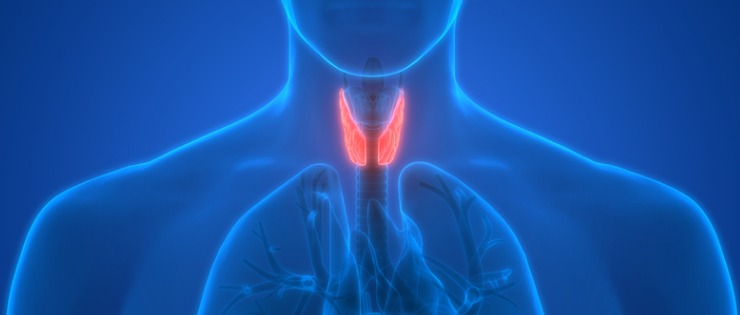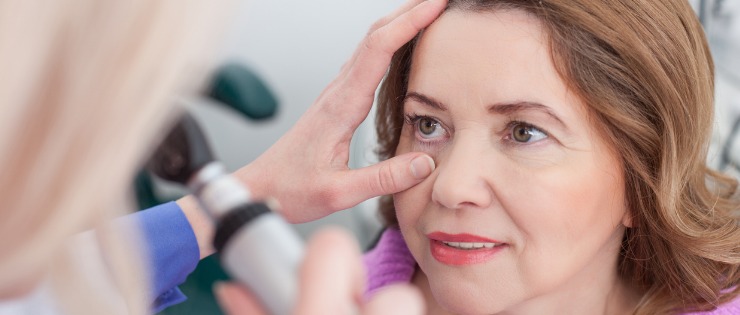
Thyroid disease impacts the lives of millions of people around the world, but little is still known about the causes of thyroid problems. The purpose of this post is to increase awareness of thyroid disease by examining the facts about its prevalence and impact. As most of the research on this topic is done in the US, many of the statistics are US-based however thyroid problems are widespread in many countries.
Some quick thyroid disease facts:
It is much more common in women. World wide, ten times more women than men have a thyroid disorder.
60% of people with a thyroid disorder don’t even know they have one.
Up to 20 million Americans have a form of thyroid disorder.
14% of older Australians have a thyroid disorder.
Approximately 10% of women will experience mild hypothyroidism during pregnancy.
Pregnant women have an increased risk of pregnancy complications if their thyroid disorder is undiagnosed and untreated.
Most thyroid diseases can be medically treated and managed, including most cases of thyroid cancer.
What is the Thyroid?
The thyroid is a small, butterfly-shaped gland at the base of the throat. Two lobes of the thyroid sit either side of the windpipe. Its job is to secrete two hormones, triiodothyronine (T3) and thyroxine (T4), in both men and women to help with growth and metabolism. Thyroid hormones also regulate the breakdown of food to use the energy immediately or to store it for future.

The pituitary gland in the brain produces the thyroid stimulating hormone TSH and controls how well the thyroid works. When the thyroid isn’t functioning correctly, it can lead to weight problems, cardiac disease, diabetes, arthritis, lupus and reproduction difficulties.
What is an Underactive Thyroid (Hypothyroidism)?
Hypothyroidism (an underactive thyroid) occurs when your thyroid gland doesn't produce enough thyroid hormones.
Thyroiditis is the broad term for a number of conditions that cause the thyroid gland to swell. Inflammation of the thyroid damages cells, so the gland is no longer able to produce sufficient hormones. As many as 10 million Americans have the condition including 10% of all women, but many are unaware they have it.
Hashimoto’s thyroiditis is the leading cause of hypothyroidism. This autoimmune disorder makes antibodies which impair the thyroid gland's ability to produce thyroid hormones. Over time the thyroid declines in function to the point that it’s considered underactive (hypothyroidism). It is not known why the antibodies occur, but Hashimoto’s often runs in families. Middle-aged women are most affected.
Treatment for hyperthyroidism (overactive thyroid) can also result in hypothyroidism but is considered successful because hyperthyroidism has more severe side effects. Surgery for thyroid cancer or removal of a nodule can reduce the size of the thyroid, so there is not enough of the gland to produce sufficient hormone levels. Radioactive iodine treatment can also damage too many cells resulting in an underactive thyroid.
What are the Symptoms of Hypothyroidism?
Symptoms of hypothyroidism may not be noticeable for many years but when they appear can include:
Fatigue
Weight gain
Depression
Muscle Aches
Joint swelling
Sensitivity to the cold
Constipation
If left untreated, hypothyroidism can cause heart problems and myxedema which can cause low blood pressure and breathing difficulties.

Increased Risk to Pregnant Women & Their Baby
Pregnant women should be closely monitored for signs of hypothyroidism during pregnancy as they are at increased risk of complications caused by hypothyroidism. If hypothyroidism is not diagnosed or inadequately treated there is an increased risk of miscarriage, preterm delivery, and severe developmental delays in their baby.
Iodine deficiency can lead to an enlarged thyroid and hypothyroidism. Mothers who are iodine deficient during pregnancy can deliver babies with intellectual disabilities. Iodised salt was introduced in North America and throughout the developed world in the 1920s eliminating the risk in the western world. Today 40% of the world’s population is at risk of iodine deficiency.
The American Thyroid Association has worked to ensure all newborns are mandatorily screened for congenital hypothyroidism. Early treatment in babies can prevent mental retardation.
Treatment of Hypothyroidism
While hypothyroidism can’t be cured, it can be managed with treatment. Synthetic thyroxine pills are the same T4 hormone that the thyroid gland would be making if it was working correctly. Some patients may also take a synthetic T3 hormone. Doctors are unaware of any side effects or complications linked to taking synthetic hormones. The only problem is not taking the right amount the body requires. If too little is taken, hypothyroidism continues while too much can result in hyperthyroidism.
Hypothyroidism Diet
It is best to avoid large quantities of foods that contain goitrogens as they can interfere with normal thyroid function. The term ‘ goitre’ means enlarged thyroid gland. The following foods contain goitrogens including:
Cabbage
Broccoli
Cauliflower
Spinach
Sweet potatoes
Peaches
Strawberries
Nuts and seeds
While medication or surgery is usually prescribed to treat hyperthyroidism, diet can help relieve some mild symptoms. Berries are filled with antioxidants which help support a weakened immune system.
Cruciferous vegetables such as broccoli, cabbage and kale decrease the amount of thyroid hormone the gland produces.

How an Underactive Thyroid (Hypothyroidism) Differs from an Overactive Thyroid (Hyperthyroidism)?
Hyperthyroidism is often the precursor to hypothyroidism as treating an overactive thyroid often results in an underactive thyroid.
With hyperthyroidism, the body produces more thyroxine hormones than required and speeds up metabolism. The body is made to work harder and faster in putting some organs under pressure. More women than men develop hyperthyroidism.
Symptoms of Hyperthyroidism
The symptoms of hyperthyroidism include:
To diagnose hyperthyroidism, a doctor may initially check the size of the of the thyroid to see if it is enlarged or has any lumps known as nodules.
Diagnosing hyperthyroidism can also be completed through a blood test to measure the thyroid hormones. High levels of the hormone thyroxine, but low levels of TSH can indicate hyperthyroidism. If thyroid stimulating antibodies are found, Graves’ disease is also diagnosed.
A radioactive imaging scan of the thyroid can show nodules if this is the cause of hyperthyroidism.
Who Has Thyroid Disorders?
Thyroid disorders are common. There are an estimated 200 million people in the world with a thyroid disorder. Canadian research indicates there are 1 in 10 suffering from one type of thyroid disorder or another and another 50% are undiagnosed.
Thyroid disorders are hereditary, so there is often a family link. Thyroid disorders can occur at any time of life but can be more critical and require different treatment in newborns, children, during pregnancy and the elderly.
The reasons some people develop thyroid autoimmunity is not well understood, but it is recognised that there are both genetic and environmental effects. Increasing numbers of patients worldwide is being blamed on nutritive factors (selenium deficiency, high iodine intake) and environmental pollution from metals and chemicals (organochlorines, pesticides). However, these environmental factors only make up 20% of the trigger of thyroid autoimmunity. Susceptible genes contribute the other 80%.
Thyroid autoimmunity (TAI) is most commonly Hashimoto’s Thyroiditis (HT) and Grave’s disease (GD). Approximately 10% of the North American population has an autoimmunity disorder. Similar numbers are seen in Europe, and there is a worldwide trend for increasing prevalence, morbidity and mortality.
Who Does Overactive Thyroid Impact?
More women than men suffer from hyperthyroidism, with approximately two in every 100 women. Women who are pregnant or are less than one year after giving birth are more likely to suffer from hyperthyroidism.
Thyroid disorders can be caused by other disorders and diseases including Grave’s disease, nodules, thyroid cancer and thyroidism.
Graves’ Eye Disease (Ophthalmopathy)
Graves’ disease is the most common cause of hyperthyroidism in the US. Approximately 50% of Graves’ hyperthyroidism patients suffer Graves’ eye disease. Also known as ophthalmopathy and Thyroid Eye Disease (TED), it causes the eyes to swell, and in half of all cases, the eyes protrude. The eye muscles and connective tissue in the eye socket are targets of the autoimmune attack. The condition results in double vision, loss of vision and disfigurement which reduces the quality of life.

Being an autoimmune condition, there is usually a family history and can be triggered by physical or emotional stress. Eight times more women than men have Graves’ disease and is more common in middle age than in younger or older people. Only 5% have a severe form of ophthalmopathy.
Nodules
An overgrowth of thyroid tissue is the primary cause of thyroid nodules. They can be identified as a lump in the front or on the side of the neck but can rarely be felt or seen. Thyroid nodules are common. It’s estimated that nodules affect between 20-76% of adults in the United States. The three different types of thyroid nodules include:
Thyroid Cancer
Papillary thyroid cancer (PTC) is the most common type of thyroid cancer accounting for 80% of cases. Cancer grows in one lobe of the thyroid gland. Papillary cancer has a low mortality rate with a 10-year survival rate estimated to be over 90%. Thyroid cancer is more common in women than men and usually occurs after the age of 50. With treatment, the 5-year survival rate is 97%. Symptoms of thyroid cancer include a lump in the neck or throat, and difficulty swallowing or breathing.
Follicular thyroid cancer (FTC) is far less common than PTC. It can spread to lymph nodes in the neck and distant organs particularly the lungs and bones. Thyroid cancers behave differently in children compared to adults.
Thyroiditis
Swelling of the thyroid gland is known as thyroiditis. There are several types of thyroiditis, each with their own symptoms.
De Quervain's Thyroiditis
Far less common than Hashimoto’s thyroiditis, De Quervain's thyroiditis causes the thyroid gland to swell quickly and become painful. The gland releases more thyroid hormones into the blood causing hyperthyroid. Thyroid antibodies aren’t present, but inflammation measuring sedimentation rate is usually very high. Antibiotics are not prescribed because there is no infection despite the patient’s appearance. The thyroid gland usually returns to its standard size after several weeks or months and rarely recurs.
Silent Thyroiditis
Symptoms of Silent Thyroiditis are similar but Graves disease but milder. Treatment is limited to drugs are used to control the rapid heart rate and bed rest. More invasive treatment methods are never needed with this form of thyroiditis.
Acute Thyroidism
Any kind of neck surgery can trigger acute thyroidism. Medication may be needed for one to three months to reduce the inflammation and revert to a healthy thyroid function. Acute thyroidism may also be asymptomatic, so no symptoms are noticed by the patient.
Be Alert for Thyroid Symptoms
Thyroid symptoms are easily dismissed for a busy modern life or ageing, but it’s important they aren’t brushed off thyroid disorders can have serious long-term implications. If you experience any symptoms, visit your doctor to have them checked out.